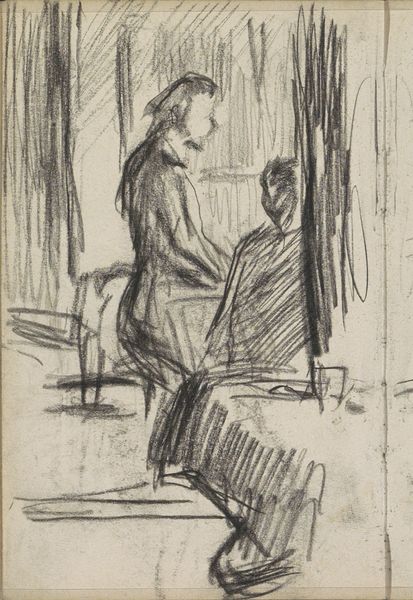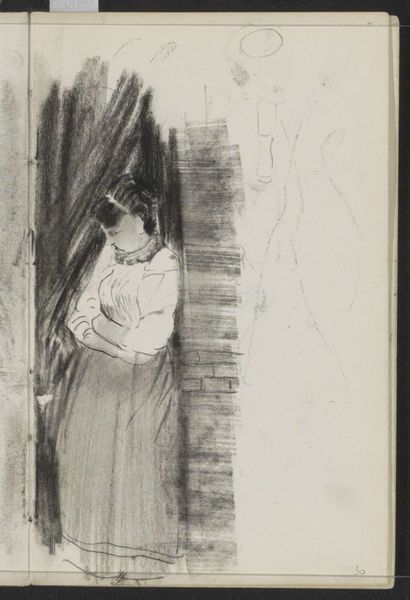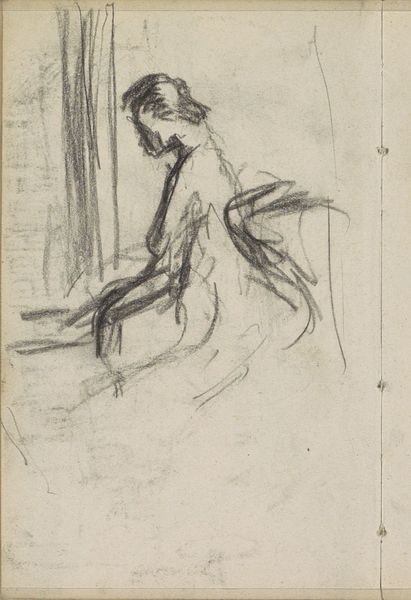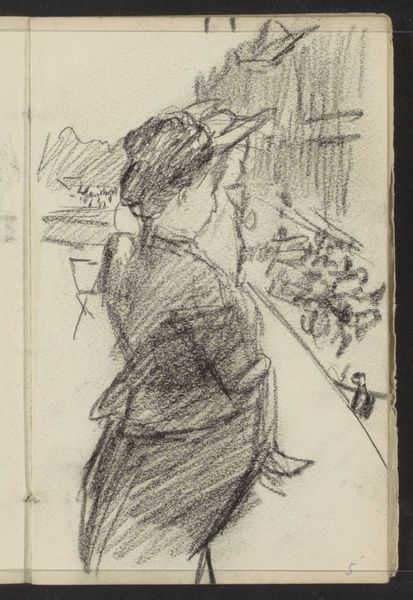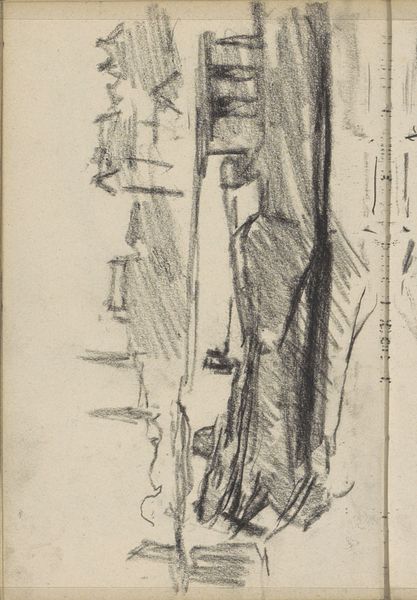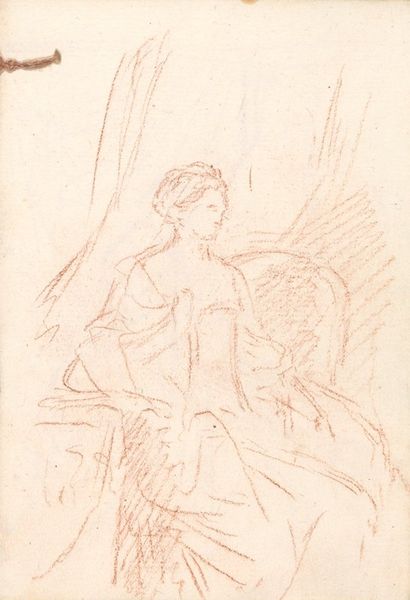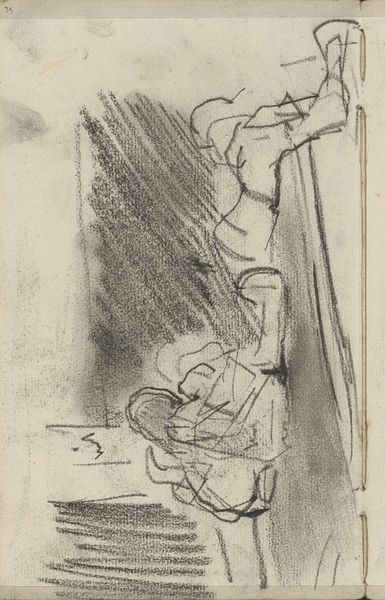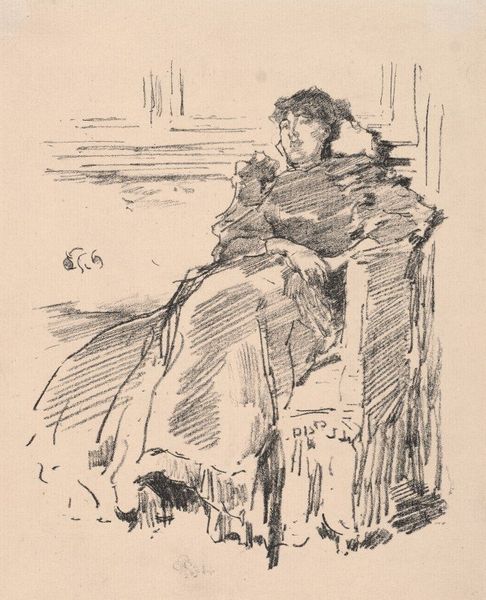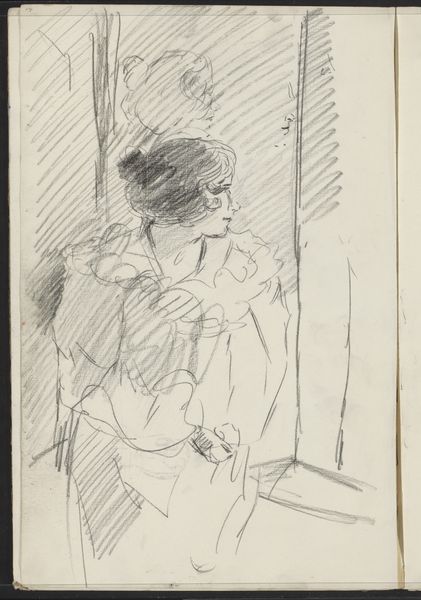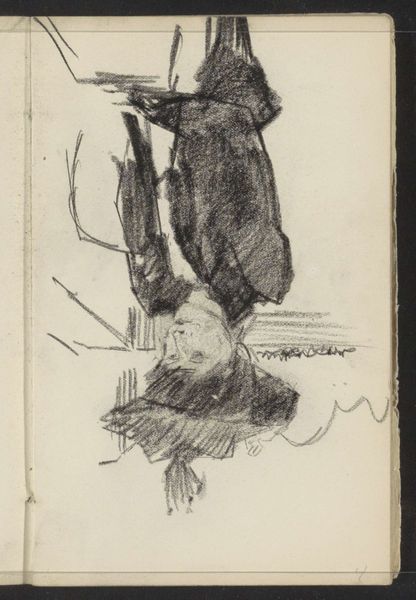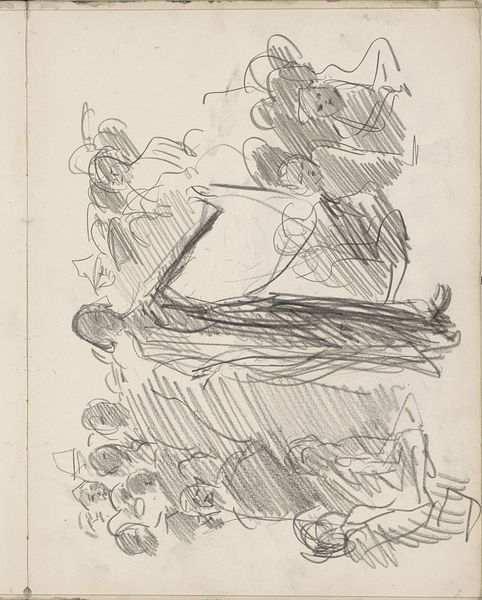
Copyright: Rijks Museum: Open Domain
Curator: I'm immediately struck by the vulnerability and introspection of this piece. The sketchy lines, the limited palette…it evokes a powerful sense of intimacy and quiet defiance of traditional feminine roles. Editor: Indeed. This is "Vrouw achter een piano" or "Woman Behind a Piano" by George Hendrik Breitner, likely created between 1900 and 1923. The artwork, housed here at the Rijksmuseum, uses charcoal and pencil to depict a woman absorbed in her music. It is part of Breitner’s exploration of the ordinary moments of city life. Curator: Her averted gaze, the suggestion of a private world…are we, perhaps, meant to reflect on the restrictive social codes placed on women during that era, their confinement to domestic spheres, yet also the possibility of intellectual and artistic freedom found within those spaces? The piano as both cage and sanctuary? Editor: That's a fascinating reading. It's worth considering how Breitner's impressionistic style contributes. He doesn’t present a polished portrait. The sketchy quality almost gives the sense of a stolen moment, observing a bourgeois subject from a distance as she goes about her practice, offering commentary on social strata as they enjoyed burgeoning technology in their homes and social spaces. Curator: Absolutely. This raw immediacy, this feeling of being an uninvited guest…it amplifies the complexities of female representation and artistic voyeurism within male-dominated artistic spheres. The charcoal strokes embody an undercurrent of artistic angst, hinting at tensions beyond the visual. Editor: Consider, too, that Breitner moved among certain circles. These paintings can offer glimpses into societal circles, codes of bourgeoise domestic life as that shaped both artistic output and art collection, even what themes were valorized. Curator: The stark simplicity emphasizes a potent intersection of identity and environment. Editor: It underscores the way everyday interactions and personal relationships helped define a painter’s place. Thank you, this fresh look opens new discussion paths. Curator: My pleasure. Exploring these critical intersections broadens our understanding of art's capacity to reveal profound social truths.
Comments
No comments
Be the first to comment and join the conversation on the ultimate creative platform.
